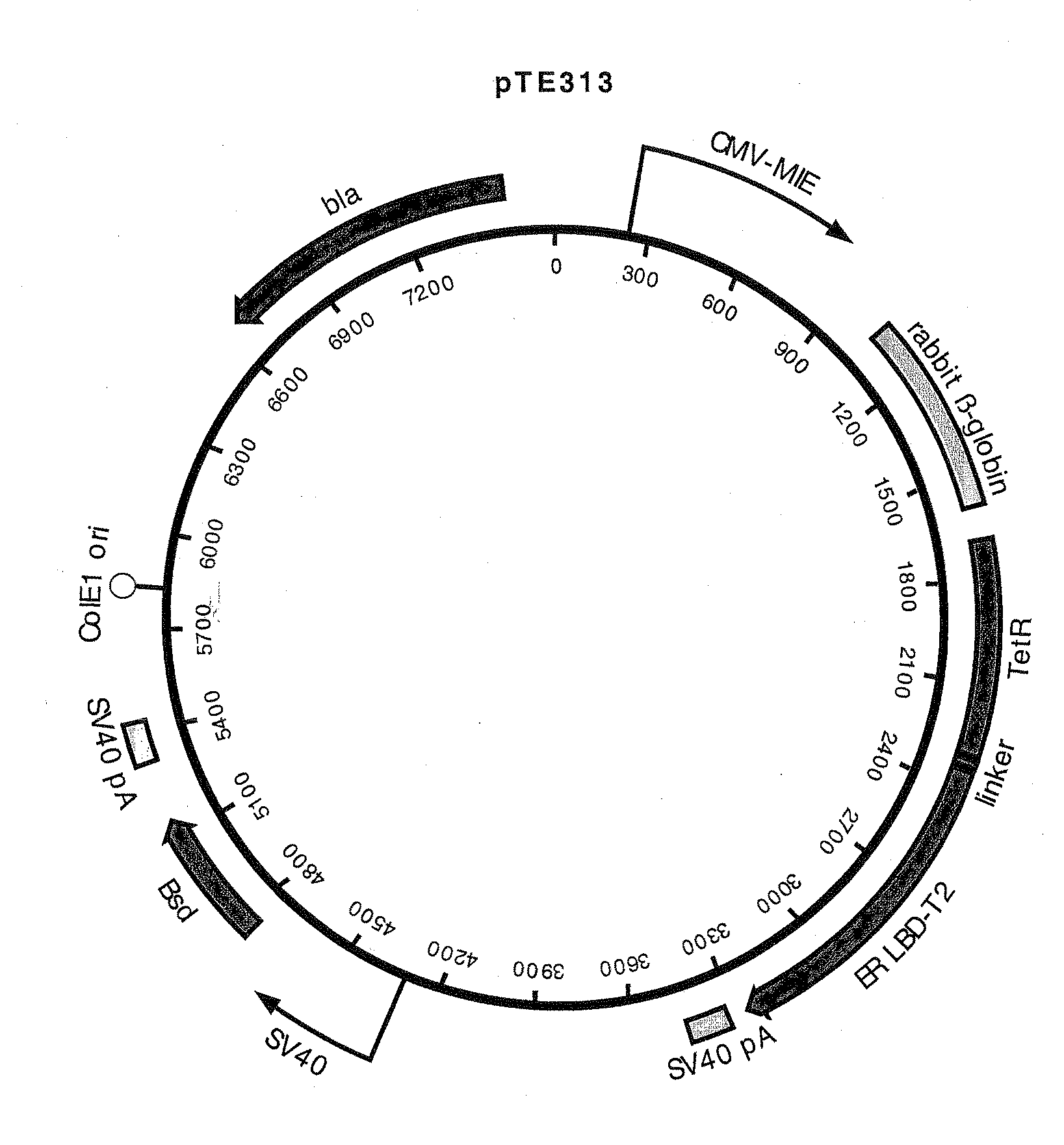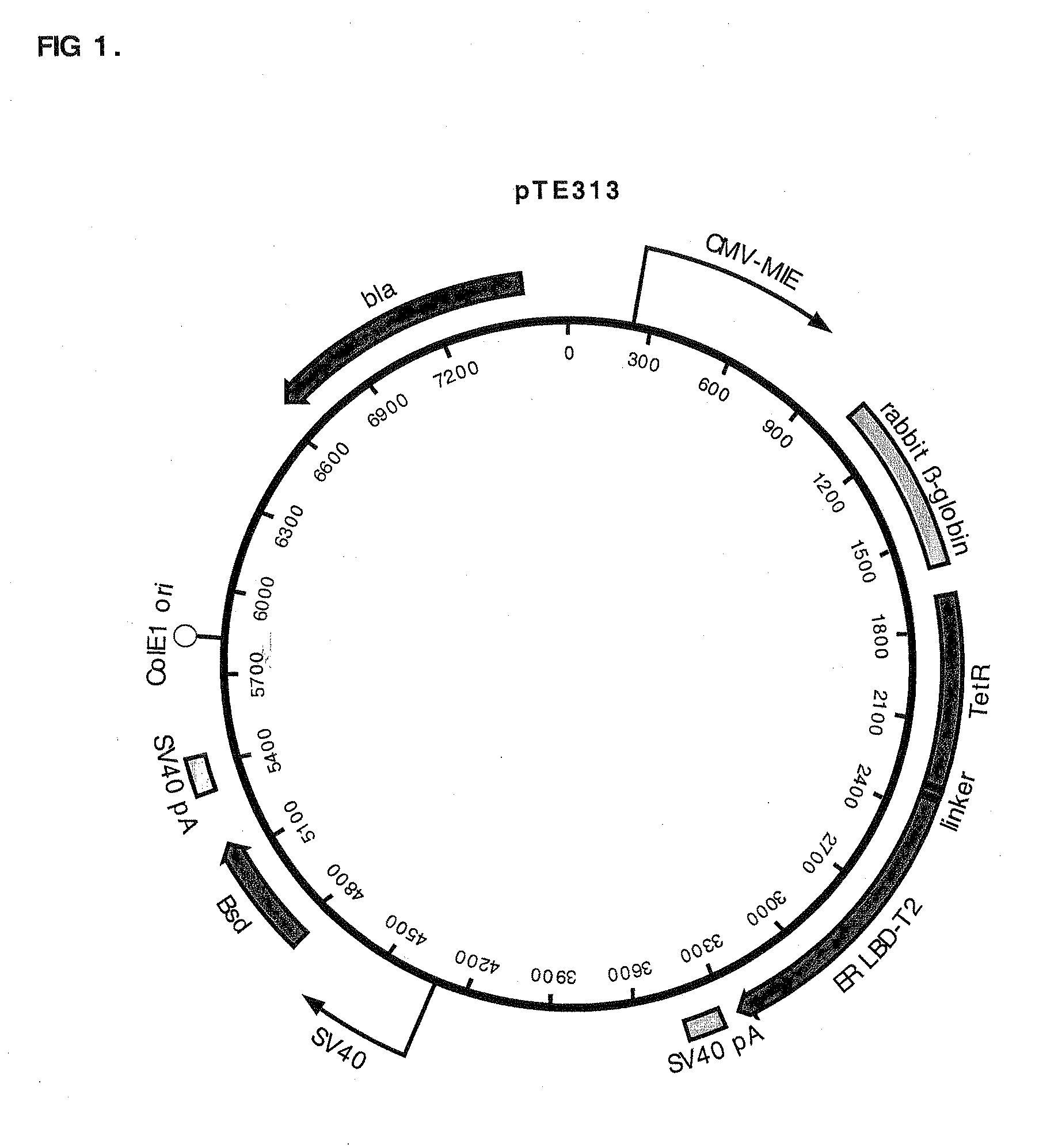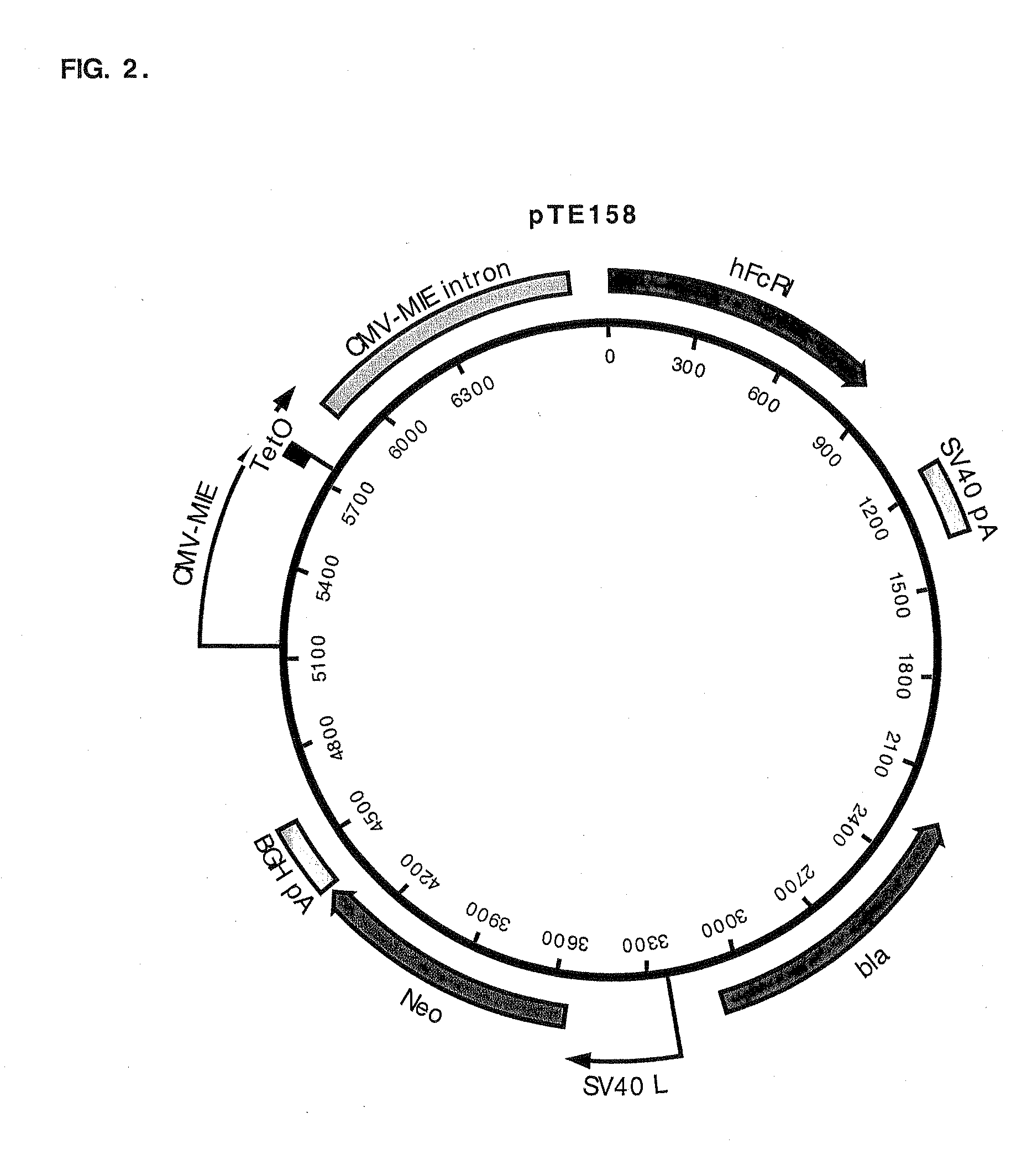Inducible Eukaryotic Expression System
a technology of eukaryotic expression and inducible gene expression, which is applied in the field of inducible gene expression, can solve the problems of destabilization and degradation of fusion protein
- Summary
- Abstract
- Description
- Claims
- Application Information
AI Technical Summary
Benefits of technology
Problems solved by technology
Method used
Image
Examples
example 1
Construction of pTE313, pTE084 and pTE158
[0085]pTE313 was constructed by ligating a 975 bp EcoR I fragment (blunted) from pTA-ER-LBD-T2 that encodes the human estrogen receptor ligand binding domain with T2 mutations (ERLBDT2) (Feil, et al. 1997 Biochem Biophys Res Commun 237:752-757) into the EcoR I site (blunted, in the linker region immediately following the TetR C-terminus) of pcDNA6 / TR (Invitrogen Cat. no. V-1025-20). The T2 mutations G400V, M543A, and L544A confer specificity for binding the estradiol analog tamoxifen. The proper orientation of the fragment encoding ERLBDT2 in desirable plasmids resulting from the ligation was confirmed by DNA sequence determination. This construction resulted in a gene encoding a fusion protein consisting of amino acids M1 to S207 of TetR (SEQ ID NO:7) fused to a ligand-binding domain comprising amino acids N304 to V595 of the estrogen receptor (SEQ ID NO:8). The chimeric protein encoded by this gene also has the T2 mutations G400V, M543A, an...
example 2
Construction of a CHO K1 Derivative that Expresses hFcγRI Driven by CMV-MIE / tetO
[0087]CHO K1 cells (3×106 cells) were transfected with pTE158 using Lipofectamine™ (Life Technologies; Rockville, Md.) following the manufacturer's suggestions. The cells were placed in the culture medium (10% fetal bovine serum, 90% Ham's F-12, 2 mM L-glutamine; all reagents were from Life Technologies, Rockville, Md.) containing 500 μg / ml G418 (Life Technologies) for 12 days. Cells resistant to G418 were trypsinized, pooled, and stained with FITC-conjugated human IgG, Fc fragment (FITC-hFc; Jackson ImmunoResearch Laboratories, West Grove, Pa.). Briefly, cells grown on 10 cm culture plates were washed once with Dulbecco's phosphate-buffered saline (PBS) without calcium chloride and magnesium chloride (Life Technologies). Two milliliters of 0.25% trypsin (Life Technologies) was added to each plate and incubated at 37° C. for 4-5 min. The plates were swirled until the cells detached from the plate. Four m...
example 3
Construction of CHO K1 Cell Lines with hFcγRI Expression Regulated by TetR-ERLBDT2
[0088]CHO K1-FcR cells (2×106 cells) were transfected with pTE313 using Lipofectamine™. The transfected cells were selected with 500 μg / ml G418 and 10 μg / ml blasticidin for 14 days to select for both plasmids, pTE158 and pTE313. Two days prior to analysis by flow-cytometry, cells were incubated in culture medium containing 200 nM tamoxifen (OHT) to stabilize the activity of TetR-ERLBDT2 and repress expression of hFcγRI. The cells were stained with FITC-hFc and those cells possessing the lowest 2% fluorescence, indicating repression of hFcγRI expression, were collected to yield pool A1. This pool was then used as the source of cells for the two strategies outlined in FIG. 3.
[0089]Clones that expressed hFcγRI regulated by TetR-ERLBDT2 were isolated by manipulating the activity of TetR-ERLBDT2 by the presence or absence of doxycycline (Dox). One strategy involved the isolation of cells expressing high lev...
PUM
| Property | Measurement | Unit |
|---|---|---|
| pH | aaaaa | aaaaa |
| concentration | aaaaa | aaaaa |
| density | aaaaa | aaaaa |
Abstract
Description
Claims
Application Information
 Login to View More
Login to View More - R&D
- Intellectual Property
- Life Sciences
- Materials
- Tech Scout
- Unparalleled Data Quality
- Higher Quality Content
- 60% Fewer Hallucinations
Browse by: Latest US Patents, China's latest patents, Technical Efficacy Thesaurus, Application Domain, Technology Topic, Popular Technical Reports.
© 2025 PatSnap. All rights reserved.Legal|Privacy policy|Modern Slavery Act Transparency Statement|Sitemap|About US| Contact US: help@patsnap.com



